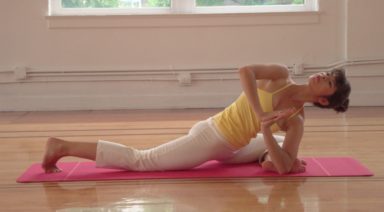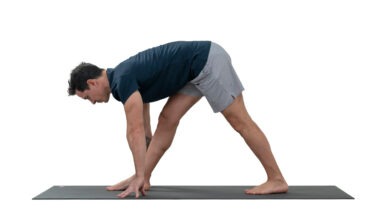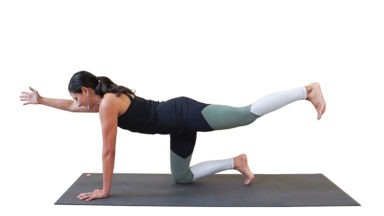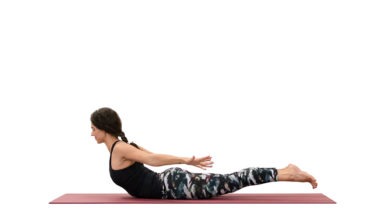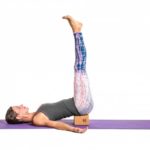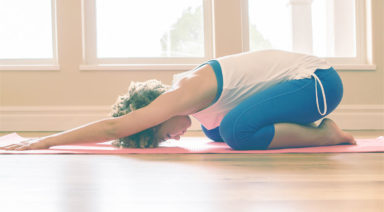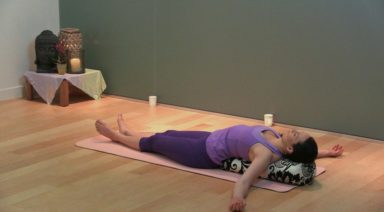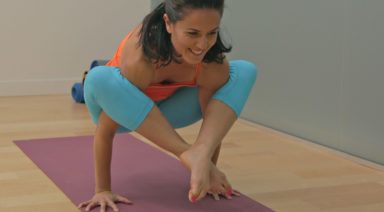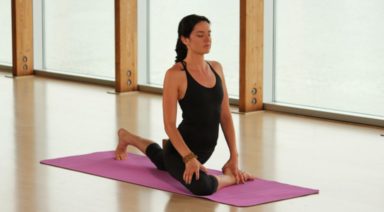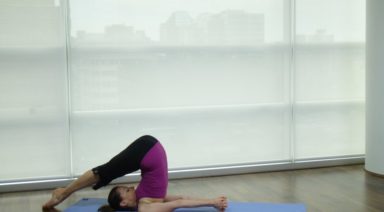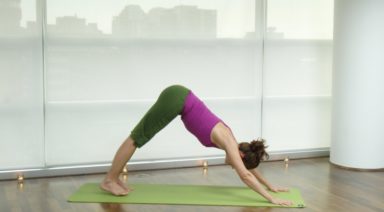Why Are Yoga Pushups (Chaturanga) So Difficult?

You start off your yoga flow with a wonderful period of calm centering following by an invigorating series of breath work. Your yoga teacher guides you into a light series of cat poses and eases you into mountain pose. Then, your teacher sets your stance for a vinyasa flow. You feel ready, full of confidence and awareness. You breath in, arms rise with grace. Then you exhale and fold mindfully into standing forward bend. You then inhale to extend the spine and prepare for your step back. Then, IT comes, the yoga pushup!
Chaturanga is a highly delicate pose to perform. Without proper strength and alignment, chronic injuries can easily develop. The sense of struggle with inadequate form also generates a negative energy feedback causing your overall practice to be lacking in benefits.
So what causes Chaturanga to be such a challenge?
5 key reasons why yoga pushups feel so difficult and some of the common alignment issues:
1) Yoga pushups are triceps-muscle dominant
The hand position from downward facing dog to chaturanga is a narrow arm stance. Due to the close (shoulder width) position of the arms, the chest muscles (which are the largest and strongest anterior upper body muscle group) are not able to effectively engage and support this pose. Therefore, the muscle loading is shifted to the much smaller and often much weaker (particularly for women) triceps and front shoulder muscles.
2) Yoga pushups can cause shoulder girdle destabilization
If the triceps and front shoulder muscles do not have sufficient strength to perform the pose and the transition to the floor, the body instinctively tries to incorporate the chest muscles. One of the actions of chest muscle contraction is internal rotation of the upper arm (humorous) bone. In a proper yoga pushup descent, we want the elbows and upper arms to be flush to the ribs. However, when the chest muscles are engaged to compensate for weak arms and shoulders, this internal rotation action from the chest muscles pulls the upper arms and elbows outwards. This often leads to the shoulder blades pulling forward, a ‘winging of the shoulder blades, and a cascading destabilization; all of which can lead to injury in the musculature supporting the shoulder girdle.
3) Yoga pushups can cause wrist compression injuries
The same internal rotation of the upper arm by the chest muscles carries down the arm. As the elbows flow outwards from the ribs, this pulls on the lower arm bone that transmits all the way into the wrist and hand. We often see an excessive ‘doming’ of the hands so much so that the index finger pads and thumb pads lift from the mat. This generates an imbalanced shift of weight to the outer wrist. With repeated improper wrist loading, chronic compression issues often surface.
4) Yoga pushups can promote spinal compression
As the shoulder girdle goes through destabilization, the musculature of the core is often neglected. This is presented as unwanted lordotic curvature of the spine as we hold Chaturanga and even more so during the pushup descent. For some, the gravitational load of the organs during this lordotic position can cause spinal compression. The other concern with this core collapse is the next yoga pose. Often Chaturanga is followed by upward facing dog pose or cobra pose. Without proper core and bandha engagement, the earlier collapse of the lower spine is readily taken into these back arches.
5) Let’s not forget about your head and neck
Most people already suffer from chronic neck tension issues. When we lose shoulder stability in Chaturanga and feel a flood of struggle, the immediate reaction is for the head to drop towards the floor. We watch the floor coming and instinctively want it to come faster. Our visual sense of the floor pulls our skull closer to the ground resulting in the loss of the neutral neck curvature. The neck, over repeated improper yoga pushups, develops body memory of this posture. When we are then in upright positions like sitting, the head chronically shifts forward. The neck musculature struggles to hold the head in this improper line with the spine and consequently develops more and more muscle tension.
So how do we modify yoga pushups to prevent these alignment issues?
- Before setting up Chaturanga and descending, set your hands wider (slightly broader than shoulder width). This will enable your chest muscles to engage without causing shoulder girdle destabilization.
- Always visualize your shoulder blades hugging into and down the ribs, thus retaining the integrity of the stabilization muscles.
- Maintain a continuous reaching motion down the index fingers, keeping the index finger pads grounded.
- Look slightly forward a few inches forward of your finger tips and visualize your head floating away from the ground. Keep a neutral neck line to support the upper spine.
- Contain your belly by maintaining mild abdominal contraction. Use your exhale to help promote contraction of the core musculature.
- Place your knees on the floor. Reduce the load on the upper body by placing some of your lower body weight on the ground. This is ideal especially when you decide to try the traditional closed hand variation and developing strength in the triceps muscles.
Yoga for Bridging Balance and Strength
Beginner Integral Strength Yoga Ball
Enhancing your Yoga Practice with Journaling
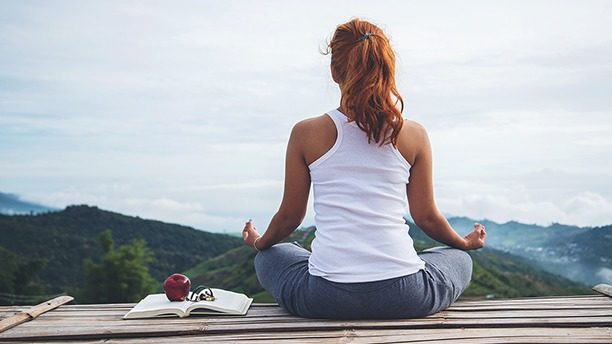
The art and practice of yoga promise many benefits to the practitioner, and the fruits of time spent on the mat are varied and innumerable. We experience these benefits in different degrees based on our dedication and commitment. Each of us has a gateway reason that initially brings us to the mat; typically, it’s something very broad like becoming more flexible or relieving stress. Inevitably over time, those reasons change, and the “get” from the practice becomes subtler, like raising consciousness or living more compassionately. No matter where you find yourself on the spectrum, there are tools that help to enhance the experience of Yoga, so the nectar of the practice is sweeter and more potent. Some of these tools require a hefty investment of time or resource and are therefore inaccessible to everyone, but other tools like the one we are talking about here are accessible to all. Journaling is a beautiful way to supplement and enhance your yoga practice—all you need is a pen, paper, and a few minutes of your day.
Why Journal?
Journaling is a simple sacred act that calls us to a place of exploration, curiosity, and revelation. You don’t have to be a professional writer to be a personal journalist. Writing helps to process and exfoliate the lives we lead and our thoughts about them. Journaling helps to strengthen the path for a deeper relationship with Self. This intimate art clears mental clutter and leaves a sense of spaciousness in its wake. It is detoxifying for the mind and cathartic for the heart. Journaling, unlike a lot of self-growth modalities, is relatively easy and doesn’t require a financial output. It necessitates no training, no physical capabilities, and there are no grades or performance criteria. It is one of the most open and forgiving therapeutic avenues available to us. The question should rather be: Why not journal? The benefits are limitless, and the outlay is small in comparison.
The Yoga/Journaling Connection
Yoga is so much more than movement; Yoga is the science of and relationship to the Self. The modern yogi doesn’t typically have time to devote all waking hours to the theory and practice of Yoga. We are blessed with such multifaceted lives that we tend to harbor boatloads of gunk that fog our ability to see and experience reality from a place of pure conscience. Because our human experience is so complex, having supplemental tools to support the yogic process is vital. Journaling is a beautiful and very personal way to expand upon our time on the mat. A yoga practice is full of “ah-ha” moments, and often, those precious nuggets of wisdom get lost because we roll up our mats and walk away without engaging with follow-up practices that give space to explore and provide roots for revelations.
Journaling 101
If you are new to journaling, the best way to get acquainted with the practice is by embarking on a daily stream of consciousness writing journey. This means that you sit down for five to fifteen minutes (or more!) and just write down what is flowing through your mind at that very moment. Don’t worry about punctuation, grammar, or making sense of anything; simply allow your thoughts to pour naturally through your hand to the paper. Don’t judge or choreograph the process; just write.

Writer’s Block
If you are finding that you sit down to journal, and nothing comes out simply be with the “nothingness.” Use it as an opportunity to meditate on the blockage. If you push past this place without recognizing it’s importance than you risk forfeiting some of the fertilizer that goes into the soil where you will eventually hope to grow. Everything exists for a reason, and we must honor what arises even if it feels unwelcome.




